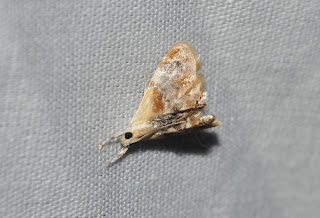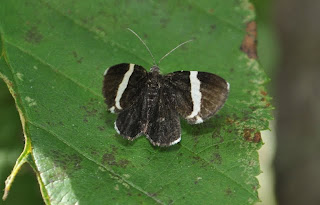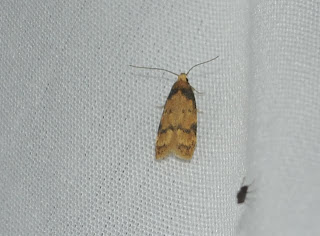Well it has been a while since my last post. I have still been looking at moths, but the cold, clear nights make mothing tough. Hopefully we still get a few more warm nights, but I'm not counting on it.
I have had a request to post about my mothing setup. I'll remind you, I am still very new at this and my setup may not be the best/most efficient, but it works.
My light is a DC 12v 15w blacklight from BioQuip. It is the first one listed on this page:
http://www.bioquip.com/Search/WebCatalog.asp?category=2900&prodtype=1
I have found it to be bright enough, and have had some great nights with it. Would be nice to have a couple more to set up multiple trapping areas.
It is important to make the setup mobile. The light is supposed to plug into a cigarette lighter, but that restricts you to your car. I bought the DC pigtail adaptors which allows me to connect the blacklight to an external battery. The product can be found here:
http://www.bioquip.com/search/DispProduct.asp?pid=2815A
Choice of battery is very important. I did a lot of research before purchasing a battery. I thought a car battery would work well since that is what BioQuip said the blacklight can run on, but I was quickly turned away by the bulkiness and cost of a car battery. They also do not last as long and don't handle continuous use as well. I purchased a 9Ah sealed led acid battery from Gander Mountain for $25. The recharger was also $25, but I have had no problems with it, and the battery is very light. From what I hear, every a 9Ah battery is rated for 9 hours of use, a 7Ah battery at 7 hours of use, ect. More than enough for what I need, and I don't recharge every night.
I bought a white bed sheet from Walmart for $6. You want 100% cotton sheet because the blacklight glows better off it, shining more light for moths to see. My bed sheet is only 85% cotton though, and still works well.
To put it all together, I string up a rope between two trees, two pieces of wood, or basically anything a respectable distance apart and vertical enough to hang a sheet from. I then use clothes pins to hang the sheet to the string. To hang the blacklight, I use a bungee cord knotted up to hang partially down the sheet. Ideally, the blacklight would be further away from the sheet to shine more, but it's all I have to work with for now.
If you've actually read this far, I'm sure you are sick of the text, so on with the pictures.
Above is a picture of the battery with DC pigtail adapter connected to the blacklight. The thing in bubble wrap is the ballast for the blacklight which is included in your purchase and is already connected. I wrapped it in bubble wrap for protection.
This is at the Fit Strip in Marquette. These two wooden poles are a perfect length away from each other. You can see I just knotted a rope up and hung the sheet with clothes pins. Try to hang your setup in an open area to cast more light and so more bugs can see it.
No, this was not taken during the day. This was taken in Rapid City, Michigan at my Grandpas house during the night, with a flash. So far, it has been the highest number of moths I have got in one night. Some other little bugs are there too.
As a side note, I don't receive any benefit referencing BioQuip and Gander Mountain... but it would be nice if I did.
Now get out there and find some moths!



















































